Striking a balance between productivity and peace of mind can often feel like threading a needle. The magic of daily schedules is their ability to bring order amidst chaos, instilling a sense of purpose and control over our everyday lives.
This article explores a variety of daily schedule templates, crafted meticulously to cater to diverse lifestyle needs. Whether you’re a bustling professional, a busy parent, a student juggling assignments, or anyone in between, we’ve got a blueprint to help you make the most of your day, one hour at a time.
Table of Contents
What is a daily schedule?

A daily schedule is a structured plan that outlines the tasks, activities, and events an individual intends to undertake within a 24-hour period. It’s a fundamental tool for time management, helping to organize and prioritize tasks effectively.
The schedule can be maintained in a digital format, a physical planner, or even a simple piece of paper. From managing work-related duties to personal chores, appointments, and leisure time, a daily schedule assists in providing a comprehensive view of the day’s obligations and goals. Ultimately, it helps create a balance between productivity and personal time, aiding in achieving a well-rounded lifestyle.
Daily Schedule Templates
Creating a daily schedule improves productivity and time management. Daily schedules outline planned tasks and events. Daily schedule templates provide useful formats for creating and managing schedules.
The templates contain hourly or half-hourly calendars to document activities and appointments. Sections include priority tasks, notes, and reminders. Templates can be customized to individual schedules and needs. Some include motivational quotes or images to start days on a positive note.
Daily schedule templates enable quick organization compared to drafting schedules from scratch. Individuals simply populate the templates to map out their day. Templates provide structure and focus each morning. Completed schedules give ready overviews of the day’s rhythm. Users can adjust schedules as needed if new activities arise. Daily schedule templates drive productivity and punctuality through purposeful, proactive planning and time utilization.
The importance of a daily schedule
The importance of a daily schedule lies in its capacity to enhance productivity, instill a sense of control, and alleviate stress.
- Enhances productivity: By providing a structured approach to tasks, a daily schedule minimizes the risk of wasting time on unimportant activities. It aids in prioritizing tasks based on urgency and importance, leading to more efficient use of time and increased productivity.
- Provides a sense of control: A daily schedule puts you in the driver’s seat of your day. It eliminates the feeling of being overwhelmed by tasks, as you’re able to break down large tasks into manageable parts and allocate specific times to complete them.
- Alleviates stress: A daily schedule reduces anxiety by providing a clear overview of what needs to be done and when. Knowing your plan for the day can mitigate worries about forgotten tasks or missed deadlines.
- Creates balance: Daily schedules help strike a balance between professional commitments, personal tasks, and leisure time. By allocating time to all aspects of life, it promotes a healthier, more balanced lifestyle.
- Fosters routine and habits: With regular use, a daily schedule can help develop routines and habits that lead to improved efficiency, better health, and enhanced overall well-being.
In sum, a daily schedule is a powerful tool that allows you to take control of your time and lead a more organized, productive, and fulfilling life.
How to make a daily schedule?
Navigating the demands of everyday life calls for a tool as indispensable as a lighthouse to a mariner navigating the vast ocean – that tool is an effective daily schedule template. This strategic blueprint imparts direction, instills a sense of purpose, and sharpens your focus, charting the course for a fruitful day ahead.
The beauty of a well-crafted daily schedule lies in its power to dispel the clouds of procrastination, kindle the flame of motivation, and steer you towards prudent time management. As you prepare to design your daily schedule template, here are some valuable tips to keep in mind:
Step 1: Identify Your Tasks
Begin by listing all the tasks that you need to accomplish within the day. This could include professional duties, household chores, fitness activities, leisure time, and even scheduled breaks. Don’t leave out any task, however minor it might seem.
Step 2: Prioritize Your Tasks
Once you have all your tasks laid out, you need to prioritize them. Use a system like the Eisenhower Matrix, which sorts tasks into four categories: urgent and important, important but not urgent, urgent but not important, and neither urgent nor important. This helps in distinguishing high-priority tasks from low-priority ones.
Step 3: Estimate Task Duration
Assign a rough estimate of how long each task will take. Be realistic with your timings, and don’t forget to account for transition times between tasks.
Step 4: Build Your Schedule
Start filling in your schedule. Begin with fixed commitments – the tasks and events that have a set time, like meetings, classes, or appointments. Next, fit in your most important and urgent tasks during your most productive times of the day. Follow up with tasks of lower priority.
Step 5: Include Breaks
Don’t forget to include breaks in your schedule. Studies show that taking short breaks can help maintain focus and productivity. Schedule short 5-10 minute breaks after every hour of intensive work and longer breaks for meals.
Step 6: Review and Revise
Look over your schedule. Is it realistic? Have you accounted for everything? Make sure it’s not too packed – unexpected things often come up, and you’ll need some buffer time. After you’ve used the schedule for a while, revise and adjust it based on what’s working and what’s not.
Step 7: Follow Your Schedule
Now comes the most important part: adhering to your schedule. A schedule is most effective when it’s consistently followed. However, remember that it’s a tool to assist you, not a strict regimen. Allow for flexibility when needed.
Step 8: Reflect at the End of the Day
At the end of the day, take some time to reflect on how the schedule worked for you. What did you accomplish? Where did you fall short? What could you do differently? Use these reflections to continuously refine your schedule and make it work better for you.
Creating a daily schedule might require some trial and error, but once you find a system that works for you, it can be a game-changer for your productivity and overall life balance.
Strategies to Facilitate Adherence to Your Daily Schedule
Stepping into the world of structured routines and schedules can be a significant shift, especially if you’re more accustomed to spontaneous or free-flowing days. This transition might prove challenging initially, and the allure of old, familiar patterns can be strong. But fear not! Here are some strategies that can simplify your journey towards embracing a daily schedule, transforming it from a mere tool to a deeply ingrained habit:
Kick-start with Difficult Tasks
Human nature gravitates towards the path of least resistance, compelling us to tackle simpler, more enjoyable tasks first while shoving the complex, demanding ones to the backburner. This tendency, however, fuels procrastination and leaves little time for laborious tasks, sparking stress and last-minute scrambles. To counter this, opt to wrestle with the demanding tasks first. Revel in the satisfaction of accomplishment early in the day and bask in the ease of lighter tasks thereafter.
Avoid the Pitfall of Multitasking
As you etch your daily schedule, resist the urge to juggle multiple tasks at once. While multitasking might seem like a productivity booster, it often scatters your attention, reducing efficiency. Instead, dedicate undivided focus to each task, allotting sufficient time for its completion. This focused approach can ease the transition into working within defined time slots and ramp up productivity.
Make Realistic Adjustments
Your schedule isn’t set in stone; it’s a flexible guide. If you find that the time allocations aren’t practical or the schedule structure feels too rigid, feel free to tweak it. Reevaluate task durations based on your progress and adjust accordingly. If you’re breezing through tasks faster than expected, consider padding your schedule with more work or indulging in some well-deserved downtime.
Keep an Eye on Time
Every activity, even mundane ones like coffee breaks or restroom visits, consume time. Monitor how much time you spend on these unscheduled activities and account for them in your schedule. You’re a human, not a machine, so understanding and accepting your natural rhythm can significantly improve your time management. If you’re unsure, consider timing your tasks to gain a more accurate estimate.
Cultivate a Habit
Consistency is the cornerstone of habit formation. Aim to establish a steady rhythm in your schedule—be it a fixed morning routine, leisure activities at set times, or a nightly wind-down ritual. Over time, these actions transform into habits, seamlessly blending into your daily schedule and simplifying adherence to it.
Best Daily Scheduling Apps
As technology evolves, the role of digital tools in managing our daily lives is becoming increasingly prominent. For those seeking to organize their time more efficiently, numerous daily scheduling apps offer a variety of features to accommodate different needs. Here’s a comprehensive guide to some of the best daily scheduling apps available:
1. Google Calendar
For those seeking a free, easy-to-use, and reliable scheduling tool, Google Calendar is an excellent option. Integrated with the entire Google Workspace, Google Calendar allows you to create events, set reminders, and share your schedule with others. It also supports syncing across devices, making it accessible from anywhere. Furthermore, its color-coded system and customizable views—day, week, month, or agenda—can help you visualize your schedule with ease.
2. Microsoft Outlook Calendar
A component of the larger Microsoft Office suite, Microsoft Outlook Calendar is a powerful scheduling tool that caters to both personal and professional needs. It not only lets you schedule tasks, set reminders, and share calendars but also seamlessly integrates with email, contacts, and other office apps. It’s ideal for teams, as you can schedule meetings, view co-workers’ availability, and book rooms or resources directly.
3. Asana
Asana is a project management tool with robust scheduling features, ideal for professionals and teams. You can create tasks, assign them to team members, set deadlines, and track progress. Asana offers both list-view and calendar-view options for visualizing tasks, and it integrates with a multitude of other apps like Google Drive, Slack, and Microsoft Teams.
4. Todoist
Todoist is a powerful task manager that’s excellent for creating to-do lists and organizing tasks into projects. It includes features such as due dates, priority levels, and labels. Todoist also provides productivity visualizations and integrates with many other apps, like Gmail, Google Calendar, and Alexa. With its easy-to-use interface, Todoist is ideal for personal use and small teams.
5. Trello
Trello operates on the Kanban system, where tasks move across columns that represent different stages of the process. It’s excellent for visualizing workflow and project management. Trello allows for extensive customization and supports a range of integrations with apps like Google Drive, Dropbox, and Slack.
6. TimeTree
TimeTree is a user-friendly app that excels in shared scheduling. It’s perfect for families, couples, or teams who need to coordinate their schedules. Each user can maintain their calendar and also share certain events with a shared calendar. TimeTree also supports chat within the app, making it easy to discuss plans and schedules.
Final Thoughts
As we draw this exploration of daily schedules to a close, it’s essential to reiterate that an effective daily schedule can truly be a game-changer. It’s a compass that navigates the bustling landscape of tasks, commitments, and opportunities that comprise our lives. From prioritizing tasks to boosting productivity, reducing stress, and striking a harmonious work-life balance, the merits of a well-planned schedule are truly far-reaching.
Regardless of whether you prefer paper-based planners, digital apps, or a hybrid approach, the crucial aspect lies in developing a system that resonates with your lifestyle and preferences. Remember, the goal is not to constrain but to liberate, not to confine but to empower.
Also, understand that schedules aren’t static – they’re dynamic, evolving with your changing needs and circumstances. Don’t hesitate to review, adjust, and tweak your schedule as necessary. The most effective schedule is one that is flexible and adaptable.
Lastly, don’t forget to include time for self-care and relaxation. Amid our pursuits for productivity and efficiency, the importance of rest and rejuvenation cannot be overstated.
In the journey towards a more organized and productive life, a well-crafted daily schedule is a steadfast ally. May the tips and tools discussed in this article serve as your guide in harnessing the power of daily scheduling to its fullest potential. Here’s to a more structured, balanced, and fulfilling life ahead!
FAQs
Should I follow my daily schedule rigidly?
While having a schedule is important, it’s also essential to be flexible and adaptable. Unexpected events or tasks may arise, so be prepared to adjust your schedule accordingly. The purpose of a schedule is to provide guidance and structure, but it should not be so rigid that it causes unnecessary stress.
How far in advance should I plan my daily schedule?
A: It’s generally recommended to plan your daily schedule the night before or at the beginning of each day. This allows you to review your tasks, set priorities, and mentally prepare for the day ahead. However, you can also plan your schedule for the week ahead to get a broader view of your commitments and goals.
What should I do if I can’t complete all the tasks on my daily schedule?
It’s common to have unexpected events or tasks that disrupt your schedule. If you can’t complete all the tasks, reassess their priorities and deadlines. Determine if any tasks can be delegated or postponed. Learn from the situation and adjust your future schedules accordingly to allocate more time or resources to similar tasks.
Is it necessary to include leisure time in my daily schedule?
Yes, it’s important to include leisure time in your daily schedule. Taking breaks and engaging in activities you enjoy helps prevent burnout, enhances your well-being, and boosts productivity when you return to work. Schedule leisure activities such as hobbies, exercise, reading, or spending time with loved ones to ensure a balanced and fulfilling day.
How can I maintain a work-life balance in my daily schedule?
Maintaining work-life balance is crucial for overall well-being. Here are some tips:
- Set boundaries: Clearly define your work hours and personal time. Avoid working excessively or bringing work into your personal life.
- Schedule personal activities: Allocate time for hobbies, exercise, relaxation, and spending time with loved ones.
- Take breaks: Incorporate short breaks throughout the day to recharge and avoid burnout.
- Practice self-care: Prioritize self-care activities such as getting enough sleep, eating well, and engaging in activities that rejuvenate you.
How can I evaluate the effectiveness of my daily schedule?
To evaluate the effectiveness of your daily schedule, consider the following:
- Review your accomplishments: Assess whether you were able to complete the tasks you planned for the day and achieve your goals.
- Reflect on productivity: Analyze how well you managed your time, whether you encountered any bottlenecks, and how focused and efficient you were during work periods.
- Assess your well-being: Consider how you felt throughout the day—whether you were stressed, overwhelmed, or satisfied with your progress. Adjust your schedule based on these observations.


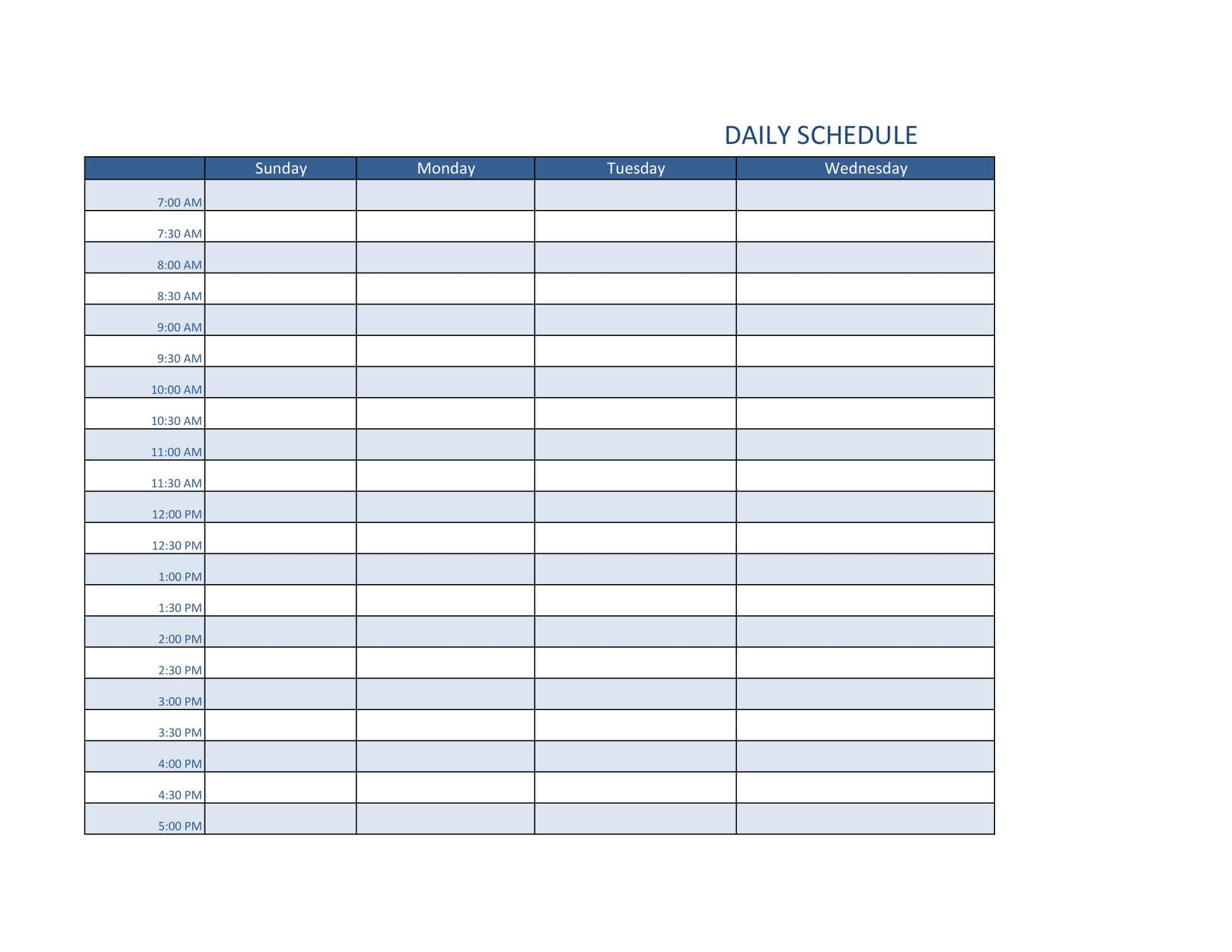

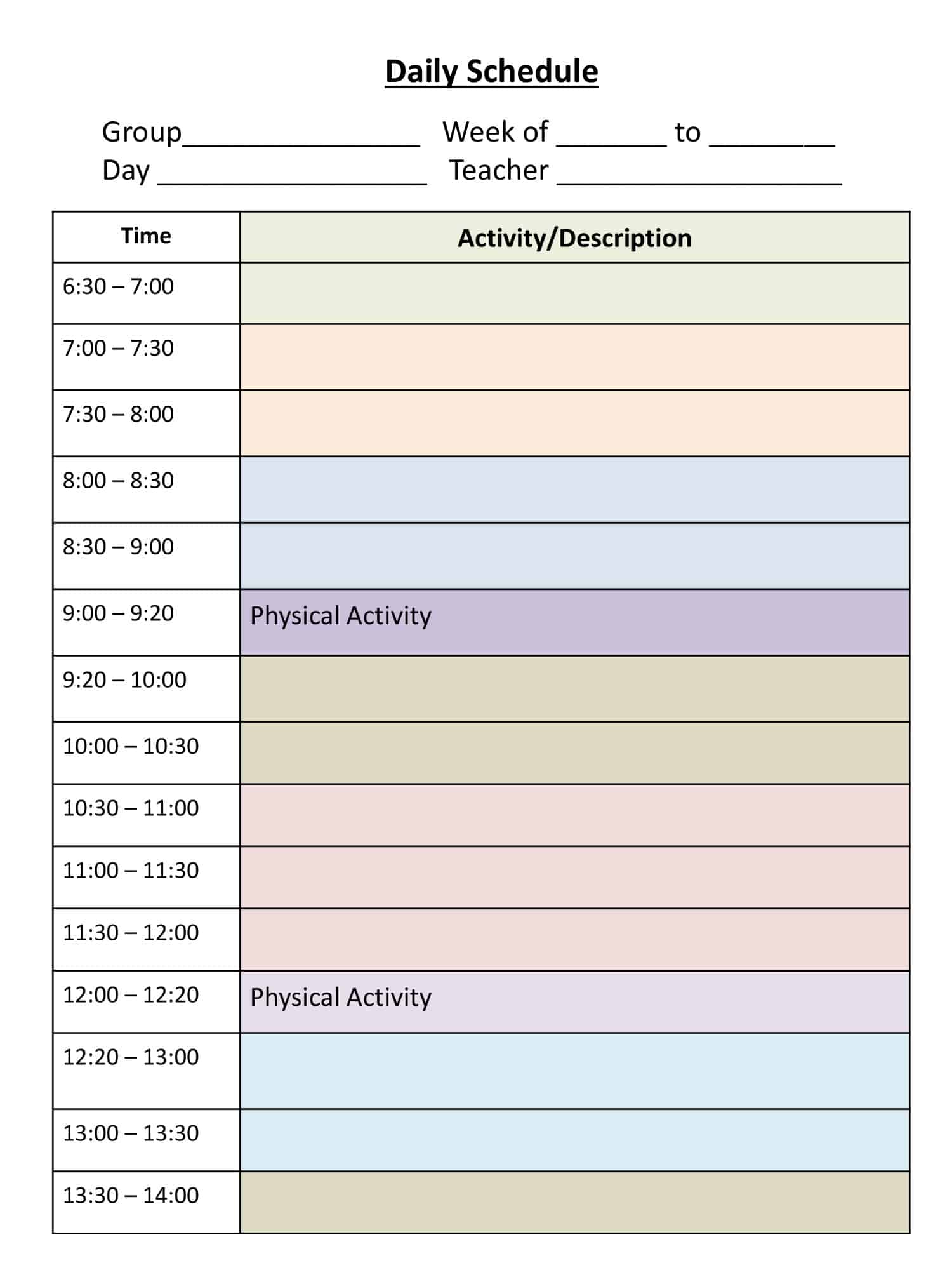


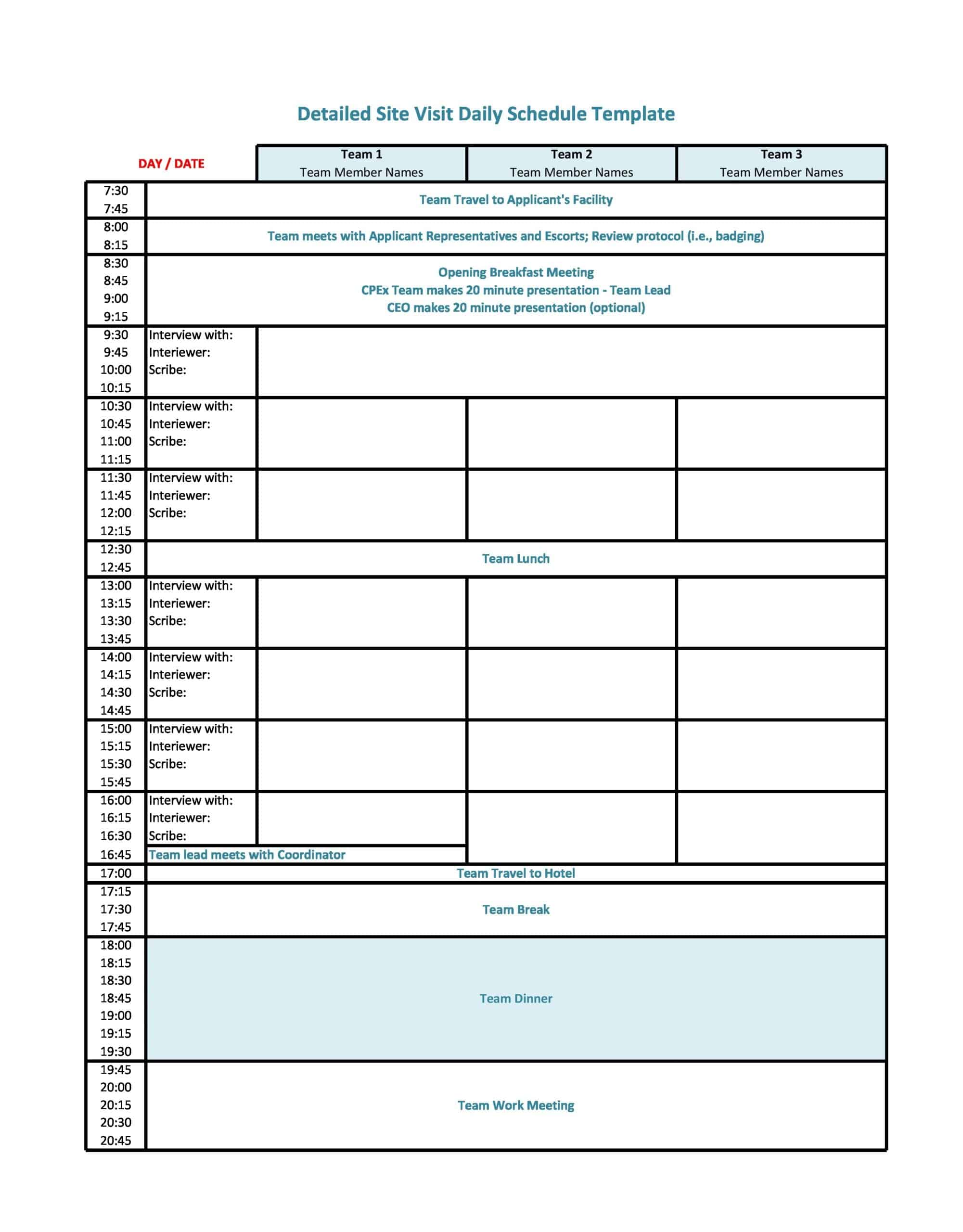




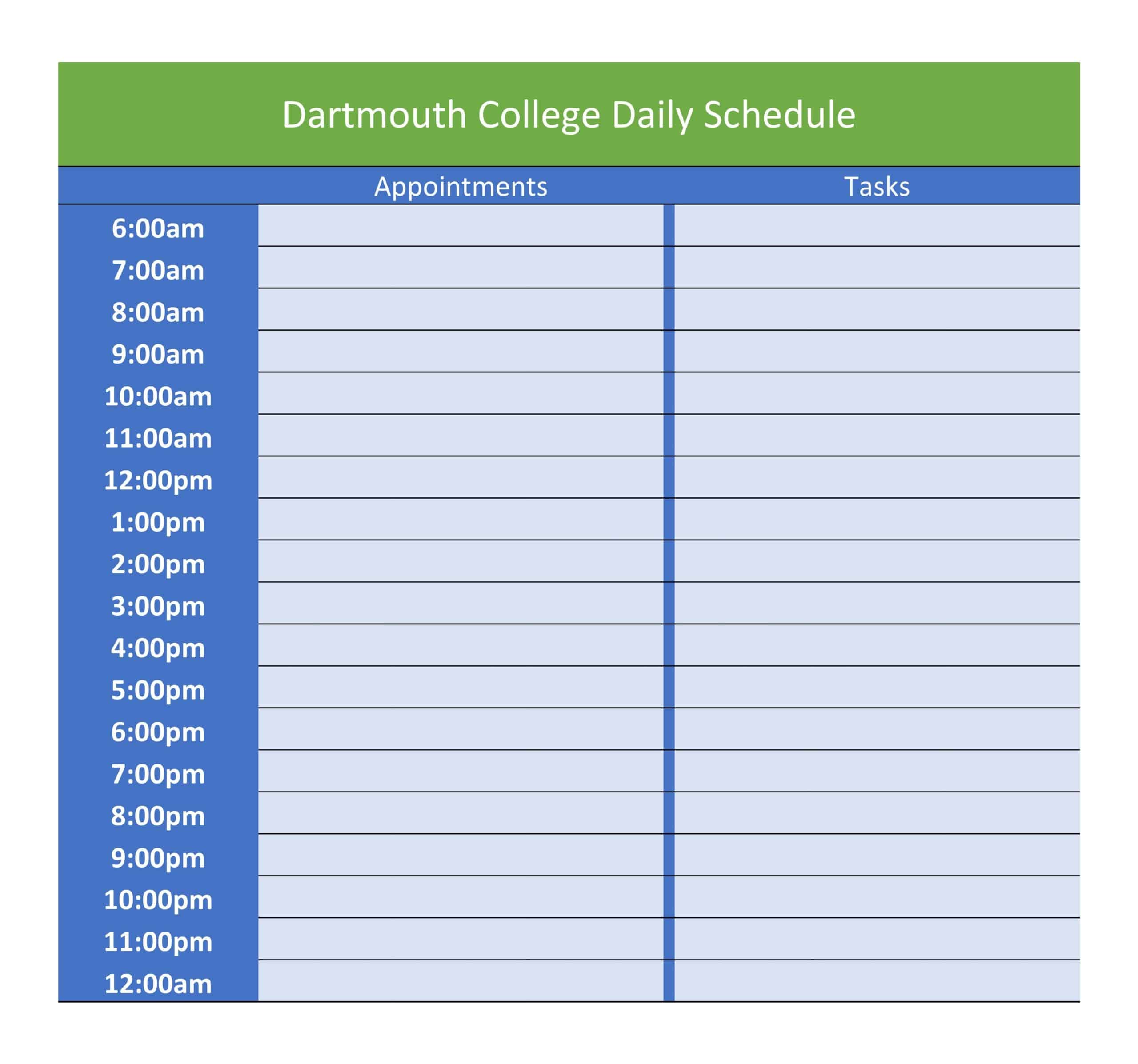







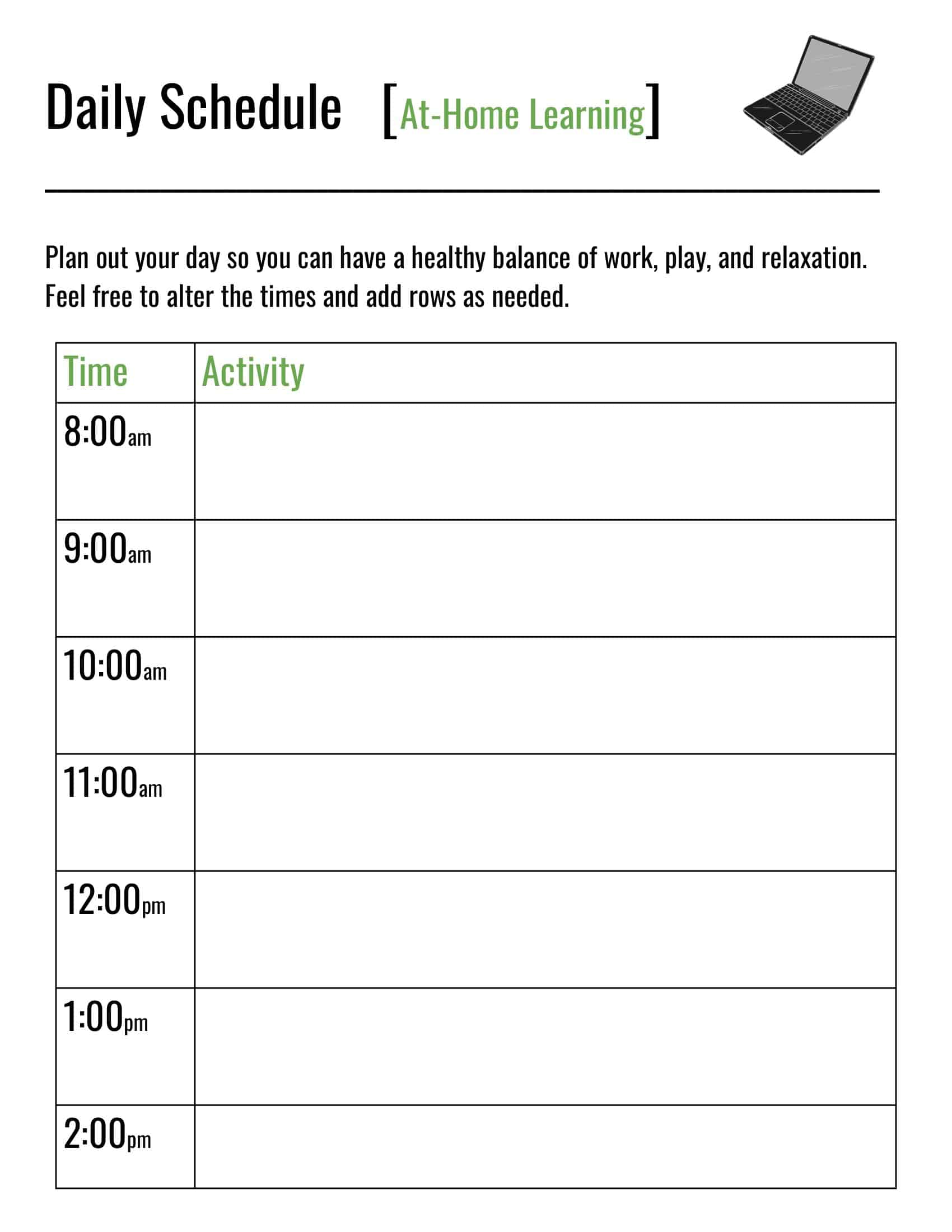



















![Free Printable Roommate Agreement Templates [Word, PDF] 1 Roommate Agreement](https://www.typecalendar.com/wp-content/uploads/2023/06/Roommate-Agreement-150x150.jpg)
![Free Printable Credit Card Authorization Form Templates [PDF, Word, Excel] 2 Credit Card Authorization Form](https://www.typecalendar.com/wp-content/uploads/2023/06/Credit-Card-Authorization-Form-150x150.jpg)
![Free Printable Stock Ledger Templates [Excel,PDF, Word] 3 Stock Ledger](https://www.typecalendar.com/wp-content/uploads/2023/08/Stock-Ledger-150x150.jpg)
